-
How to query Bitcoin block transfer records
-
Date:2024-08-17 18:32:30 Channel:Exchange Read:
How to query Bitcoin block transfer records?
In today's wave of digital currencies, Bitcoin, as the earliest and most influential cryptocurrency, has attracted the attention of countless investors around the world. As more and more people join the ranks of Bitcoin investment, how to query Bitcoin block transfer records has become a hot topic. This article will explore this process in depth to help readers better understand how to effectively query Bitcoin transfer records.
First, it is very important to understand the basic concept of Bitcoin. Bitcoin is a decentralized digital currency, and all transaction records are stored in a public ledger called blockchain. Each transaction is packaged into a block and verified and confirmed by network nodes. The core of blockchain technology lies in transparency and immutability, which means that once a transaction is recorded on the blockchain, it cannot be changed or deleted by anyone.
The first step to query Bitcoin transfer records is to choose a suitable blockchain browser. A blockchain browser is an online tool that allows users to view all transactions and block information on the Bitcoin network. Commonly used blockchain browsers include Blockchain.com, Blockchair, and BTCscan. These tools can not only query transfer records, but also provide rich statistics and charts to help users gain a deeper understanding of the operation of the Bitcoin network.
In the blockchain browser, users only need to enter the Bitcoin address, transaction ID or block height to quickly find the relevant transfer records. For example, if you want to query the transfer history of a certain Bitcoin address, just paste the address into the browser's search box and click query. The system will display all transaction records of the address, including the amount of Bitcoin sent and received, transaction time, transaction status and other information.
In addition to basic query functions, many blockchain browsers also provide more advanced functions. For example, users can view the trend of Bitcoin balance changes at a certain address through charts, or use the time filter function to find transaction records within a specific time period. These functions not only improve the user's query experience, but also provide important reference for investment decisions.
When checking Bitcoin transfer records, it is very important to understand some terms. For example, "unconfirmed transactions" refer to transactions that have been broadcast to the network but have not yet been confirmed by miners, while "confirmation count" refers to the number of times the transaction has been recorded by the blockchain. Generally speaking, the more confirmations a transaction has, the higher the security. Therefore, when making large transactions, it is recommended to wait for at least six confirmations to ensure the security of the transaction.
When using a blockchain browser, users may encounter some problems. For example, some transactions are displayed as "unconfirmed" when querying. This may be due to network congestion or low miner fees. In this case, users can choose to increase the miner fees of the transaction or wait patiently for the network conditions to return to normal.
In addition to using a blockchain browser, another way to check Bitcoin transfer records is through a Bitcoin wallet. Most modern Bitcoin wallets have integrated blockchain browser functions, and users can view their transaction records directly in the wallet application. The advantage of this method is that users can easily manage their Bitcoin assets and view transfer history at any time.
In the world of Bitcoin, security is always one of the topics that users are most concerned about. When checking transfer records, users need to make sure to use reliable blockchain browsers and wallets and avoid using websites from unknown sources to prevent personal information leakage or asset theft. In addition, security measures such as regular wallet backups and enabling two-factor authentication can also effectively improve the security of assets.
There is another aspect worth paying attention to when inquiring about Bitcoin transfer records, and that is privacy. Although Bitcoin transactions are public on the blockchain, the user's identity information is not directly associated with the transaction records. However, with the development of blockchain analysis technology, some companies and institutions have been able to track Bitcoin transactions and even identify users through various means. Therefore, when conducting Bitcoin transactions, users still need to remain vigilant and try to avoid exposing personal information in transactions.
In addition, with the popularity of Bitcoin, more and more companies and merchants are beginning to accept Bitcoin payments. For these merchants, checking transfer records is not only an important means of verifying payments, but also a necessary step for financial management and tax declaration. Through the blockchain browser, merchants can clearly see the details of each Bitcoin transaction to ensure the accuracy of the accounts.
In the process of exploring how to query Bitcoin block transfer records, we cannot ignore the continuous evolution of Bitcoin technology. For example, the emergence of the Lightning Network provides a faster and lower-cost solution for Bitcoin transactions. The Lightning Network allows users to conduct transactions off-chain, and only records the results on the blockchain at the time of settlement, which not only increases transaction speed but also reduces the risk of network congestion.
However, the use of the Lightning Network also brings new challenges, especially the problem of how to query off-chain transaction records. Since these transactions are not directly recorded on the blockchain, users need to rely on specific Lightning Network wallets or service providers to obtain relevant transaction information. This may become an important research direction in the future Bitcoin ecosystem.
In short, querying Bitcoin block transfer records is a basic skill that every Bitcoin user needs to master. Whether it is an investor, a merchant or an ordinary user, knowing how to use a blockchain browser and a Bitcoin wallet can help them better manage their Bitcoin assets and keep abreast of market trends. At the same time, users also need to pay attention to the development of Bitcoin technology and remain sensitive to emerging tools and methods in order to remain invincible in this rapidly changing market.
As Bitcoin continues to develop, we may see more innovative tools and services in the future, making it more convenient and secure to query transfer records. It is worth looking forward to that this will bring more possibilities for expanding Bitcoin's application scenarios and improving user experience. In this process, user participation and feedback will be an important driving force for technological progress and market development. I hope that every reader can find their own place in the world of Bitcoin and enjoy the convenience and fun brought by digital currency.
The four most famous international exchanges:
Binance INTL
OKX INTL
Gate.io INTL
Huobi INTL
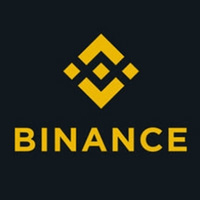
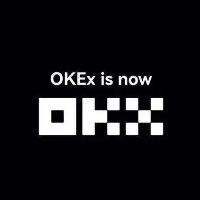
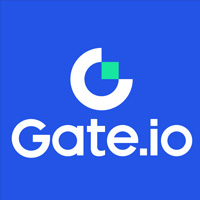

China Line APP DL China Line APP DL
China Line APP DL
China Line APP DL
Note: The above exchange logo is the official website registration link, and the text is the APP download link.
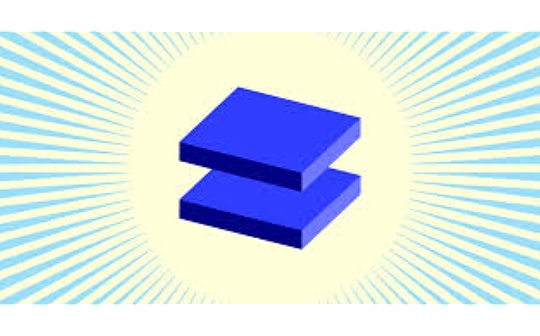
According to market data, as of November 26, the number of active Bitcoin addresses was 986,900, an increase of 1.51% from yesterday; the number of transactions on the chain was 329,700, a decrease of 6.41% from yesterday; there were 987 large transfers of more than 100 BTC on the BTC chain, an increase of 16.53% from yesterday. From these data, it can be seen that the number of Bitcoin transfers is still relatively large, so how to query the Bitcoin block transfer record? The following Coin Circle editor will give you a comprehensive analysis of how to query the Bitcoin block transfer record?
How to query Bitcoin block transfer records?
The Bitcoin system records a series of transaction records, which are packaged into a block and connected in chronological order. Every transaction in every block on the entire blockchain is viewable by everyone. You can use the "Bitcoin Block Browser" to view it. It is not a browser software, but a website that can query Bitcoin transactions.
Height: As we know, the role of miners is to continuously use computer resources to calculate and record the entire bill. When a block is successfully packaged, they will receive a reward. The first block has a height of 1, and the 100th block has a height of 100, so the height here is the number of blocks that have been successfully packaged.
In "NO.9
In the article "How to Get Bitcoin", we said that Bitcoin can be obtained through mining, but the current individual or small workshop method is definitely not feasible. You need to join a mining pool, and when the mining pool mines Bitcoin, you share it according to the contribution ratio. So the broadcaster here refers to which mining pool has successfully packaged a block and notified the entire network.
Block revenue: refers to the Bitcoin reward for successfully packaging a block. Currently, miners receive about 12.5 BTC for packaging a block, which is really getting less and less. You should know that when Bitcoin first started, miners received 50 BTC for packaging a block. When designing this system, Satoshi Nakamoto stipulated that the total amount of Bitcoin is 21 million, and the miner reward will be halved every time 210,000 blocks are mined. Here, 210,000 is the height of the block. According to this statement, the reward for the 210,000th block will become 25 BTC, and the reward for the 420,000th block will become 12.5 BTC. We can verify this on the block browser.
When the block height reaches 630,000, the miner's reward will be halved again. Based on the current 150 blocks generated per day, it will take more than 600 days. The preliminary forecast is that the miner's reward will be halved around March to May 2020. By then, it is estimated that Bitcoin will have a relatively large increase.
Time: The time when a block is successfully packaged.
Mining pool computing power: the sum of the computing power of all miners in the entire mining pool. The lower left corner of the above picture is the ranking of mining pool computing power. Computing power also has units, and we measure it according to the number of mining machine operations per second.
1E = 1000P, 1P = 1000T, 1T = 1000G, 1G = 1000K, 1K = 1000H, 1H = 1 operation, which is the smallest unit.
The figure below is a statistical chart of the network status, which shows the current computing power of the entire network.
Genesis Block: The first block in the blockchain was created by Satoshi Nakamoto in 2009 and is called the Genesis Block. It is the common ancestor of all blocks in the blockchain, which means that if you trace back from any block, you will eventually reach the Genesis Block.
There is a search input box in the upper right corner of the homepage. We can enter the block height to view a block.
Enter 0 to view the genesis block.
In the above picture, you can see that the height is 0, which is the first block, called the Genesis Block. The time is 2009-01-04
02:15:05, which is consistent with the facts, it was indeed in 2009. The transactions below refer to the transactions saved in this block. Here, the 50 bitcoins rewarded by the system to the account: 1A1zP1eP5QGefi2DMPTfTL5SLmv7DivfNa are shown. Look at the upper right part of the picture above. Because it is the first block, there is no previous block, but we can click on the next block to view the transaction status of the block with a height of 1.
At this time, the height is 1. Similarly, the transaction information comes from the system's 50 bitcoin reward, and there are the previous block and the next block. You can directly click on the hyperlink.
In addition to entering the height in the search box, you can also directly enter the wallet address and the hash value of the block for query, which is very convenient. In general, the Bitcoin block browser can query all transaction details on the chain, and you can try it.
Bitcoin transfer block principle:
When you initiate a Bitcoin transfer, you need to broadcast the transaction to the entire network. After the mining node receives the transaction, it will first put it into the local memory pool for some basic verification, such as whether the Bitcoin spent in the transaction is an unspent transaction. If the verification is successful, it will be put into the "Unconfirmed Transaction"
Transaction), waiting to be packaged;
When Bitcoin transaction data is packaged into a "data block" or "block"
After the transaction is confirmed, it is considered to be preliminarily confirmed. When the block is linked to the previous block, the transaction will be further confirmed. After receiving 6 consecutive block confirmations, the transaction is basically confirmed irreversibly.
When a user initiates a transfer on the Bitcoin network, he or she generally needs to pay a certain transfer fee (miner fee) to the bookkeeping miners, which is used to encourage miners to compete for bookkeeping and provide sufficient computing power for Bitcoin to ensure the security of the Bitcoin network. The transfer fee is generally 0.0001-0.0015 Bitcoins. Since the capacity of blocks to accommodate transaction records is limited, miners will prioritize packaging transactions with high fees, so paying more fees can be booked faster.
Through the above introduction, I believe everyone has already understood the problem of how to query the transfer records of Bitcoin blocks. For investors, when conducting Bitcoin transactions, they must pay attention to choosing a reliable exchange, so as to ensure that they will not be deceived and will not be involved in illegal activities such as money laundering. After all, reliable exchanges will conduct real-name authentication for investors and have anti-money laundering technical operations. If you want to know more about this, you can pay attention to the currency circle. The editor of the currency circle will continue to update related reports later!
I'll answer.
Articles related to tags
- US Senator Bitcoin can vote with its feet Don’t create a hosti
- How to trade OK Wallet coins OK Wallet Trading Tutorial
- Taking stock of the mysterious creators of Bitcoin Who are thes
- How to download the Pancake Exchange APP Pancakeswap official w
- How to buy Litecoin Cash LCC Currency Buying and Trading Tutori
- What does Bitcoin quarterly contract mean Popular explanations
- Hong Shao Rou HSR Comprehensive Introduction to Trading Platfo
- Rich Dad author Global economy may collapse Bitcoin is worth $
- Bitcoin price dropped by half What are Bitcoin miners and minin
- What should I do if my Bitcoin position is liquidated Do I have
user
2480
Ask
979K+
reading
0
Answer
3H+
Upvote
2H+
Downvote
-
 Artery Network(ARTR幣)在那裏挖?ArteryNetwork(ARTR幣)是一種新興的加密貨幣,它的採礦過程與比特幣和以太幣等其他加密貨幣類似。ARTR幣的挖礦過程是通過計算機資源解決複雜的數學問題來獲取新的幣。這一過程需要大量的計算能力和電力,因此挖礦者需要投入相應的硬件和電力成本。 A2025-03-26 21:33:09
Artery Network(ARTR幣)在那裏挖?ArteryNetwork(ARTR幣)是一種新興的加密貨幣,它的採礦過程與比特幣和以太幣等其他加密貨幣類似。ARTR幣的挖礦過程是通過計算機資源解決複雜的數學問題來獲取新的幣。這一過程需要大量的計算能力和電力,因此挖礦者需要投入相應的硬件和電力成本。 A2025-03-26 21:33:09 -
 Litbinex Coin(LTB幣)走勢如何LitbinexCoin LTB幣 作為一種加密貨幣,其價格走勢取決於市場供求和投資者對其價值的認知。在過去的一段時間裡,LTB幣的價格可能出現了一些波動,這可能是由於市場情緒、新聞事件或技術因素所引起的。 在過去的幾個月中,全球加密貨幣市場經歷了一些波動2025-03-26 21:33:03
Litbinex Coin(LTB幣)走勢如何LitbinexCoin LTB幣 作為一種加密貨幣,其價格走勢取決於市場供求和投資者對其價值的認知。在過去的一段時間裡,LTB幣的價格可能出現了一些波動,這可能是由於市場情緒、新聞事件或技術因素所引起的。 在過去的幾個月中,全球加密貨幣市場經歷了一些波動2025-03-26 21:33:03 -
 Starbound(SBD幣)最新動態SBD幣,即Starbound,是一种基于区块链技术的加密货币,旨在为用户提供一种快速、安全和低成本的支付方式。最近,Starbound团队宣布了一系列重大动态,以提升其在加密货币市场的地位和影响力。 首先,Starbound团队宣布他们已经与几家知名的加2025-03-26 21:32:59
Starbound(SBD幣)最新動態SBD幣,即Starbound,是一种基于区块链技术的加密货币,旨在为用户提供一种快速、安全和低成本的支付方式。最近,Starbound团队宣布了一系列重大动态,以提升其在加密货币市场的地位和影响力。 首先,Starbound团队宣布他们已经与几家知名的加2025-03-26 21:32:59 -
 Catcoin(CATS幣)最新新聞最新消息指出,Catcoin(CATS幣)在近期取得了巨大的成功,吸引了越來越多投資者的關注。這種加密貨幣是專為貓主人和貓愛好者而設計的,旨在建立一個支持貓咪社群的加密支付系統。 Catcoin的價值一直在不斷上漲,吸引了許多散戶和機構投資者的投入。這種加2025-03-26 21:32:54
Catcoin(CATS幣)最新新聞最新消息指出,Catcoin(CATS幣)在近期取得了巨大的成功,吸引了越來越多投資者的關注。這種加密貨幣是專為貓主人和貓愛好者而設計的,旨在建立一個支持貓咪社群的加密支付系統。 Catcoin的價值一直在不斷上漲,吸引了許多散戶和機構投資者的投入。這種加2025-03-26 21:32:54 -
 YFPI(YFPI幣)最新資訊YFPIYFPI幣是一種加密貨幣,它是由一個名為YFPI的去中心化金融平台所發行的。YFPI的目標是成為一個具有高度流動性和穩定價值的加密貨幣,讓用戶可以更方便地進行交易和支付。 最近,YFPI的價格一直在波動,受到市場情緒和投資者信心的影響。儘管如此,Y2025-03-26 21:32:49
YFPI(YFPI幣)最新資訊YFPIYFPI幣是一種加密貨幣,它是由一個名為YFPI的去中心化金融平台所發行的。YFPI的目標是成為一個具有高度流動性和穩定價值的加密貨幣,讓用戶可以更方便地進行交易和支付。 最近,YFPI的價格一直在波動,受到市場情緒和投資者信心的影響。儘管如此,Y2025-03-26 21:32:49 -
 WaveEduCoin(WEC幣)是詐騙?WaveEduCoinWEC幣是一個虛擬貨幣項目,宣稱旨在為教育領域提供解決方案。然而,有人對這個項目提出了質疑,認為WaveEduCoinWEC幣可能是一個詐騙項目。 首先,WaveEduCoinWEC幣的團隊背景和專業性受到質疑。許多投資者發現他們在官2025-03-26 21:32:43
WaveEduCoin(WEC幣)是詐騙?WaveEduCoinWEC幣是一個虛擬貨幣項目,宣稱旨在為教育領域提供解決方案。然而,有人對這個項目提出了質疑,認為WaveEduCoinWEC幣可能是一個詐騙項目。 首先,WaveEduCoinWEC幣的團隊背景和專業性受到質疑。許多投資者發現他們在官2025-03-26 21:32:43 -
 Pegs Shares(PEGS幣)符合當地法律嗎PegsShares(PEGS幣)是一種加密貨幣,目前在市場上並無法得到明確的法律規範。然而,對於加密貨幣的法律規定在各國各地可能有所不同,因此在使用和投資這種加密貨幣時需要謹慎對待。 在一些國家,加密貨幣被視為合法的貨幣形式,並受到相應的法律保護。然而,2025-03-26 21:32:36
Pegs Shares(PEGS幣)符合當地法律嗎PegsShares(PEGS幣)是一種加密貨幣,目前在市場上並無法得到明確的法律規範。然而,對於加密貨幣的法律規定在各國各地可能有所不同,因此在使用和投資這種加密貨幣時需要謹慎對待。 在一些國家,加密貨幣被視為合法的貨幣形式,並受到相應的法律保護。然而,2025-03-26 21:32:36 -
 JUS Token(JUS幣)總部在那JUSTokenJUS幣是一家总部位于新加坡的加密货币公司。新加坡是一个国际金融中心,拥有完善的法律体系和监管机制,吸引了许多加密货币和区块链公司选择在这里设立总部。 JUSTokenJUS幣总部位于新加坡的好处包括: 1 法律体系完善:新加坡的法律体系健2025-03-26 21:32:30
JUS Token(JUS幣)總部在那JUSTokenJUS幣是一家总部位于新加坡的加密货币公司。新加坡是一个国际金融中心,拥有完善的法律体系和监管机制,吸引了许多加密货币和区块链公司选择在这里设立总部。 JUSTokenJUS幣总部位于新加坡的好处包括: 1 法律体系完善:新加坡的法律体系健2025-03-26 21:32:30 -
 I-COIN(ICN幣)非法傳銷ICN幣是一種加密貨幣,類似於比特幣或以太幣,通過區塊鏈技術進行交易和存儲價值。然而,近年來有一些人利用ICN幣進行非法傳銷活動,給投資者帶來了風險和損失。 非法傳銷是指通過招聘下線、忽悠投資者參與項目來賺取高額回報的行為。在ICN幣的非法傳銷中,一些不法2025-03-26 21:32:27
I-COIN(ICN幣)非法傳銷ICN幣是一種加密貨幣,類似於比特幣或以太幣,通過區塊鏈技術進行交易和存儲價值。然而,近年來有一些人利用ICN幣進行非法傳銷活動,給投資者帶來了風險和損失。 非法傳銷是指通過招聘下線、忽悠投資者參與項目來賺取高額回報的行為。在ICN幣的非法傳銷中,一些不法2025-03-26 21:32:27 -
 Glitch Protocol(GLCH幣)交易合法不GlitchProtocol(GLCH幣)是一種加密貨幣,其交易合法性取決於當地政府對加密貨幣的規定和監管。在一些國家,加密貨幣被視為合法的資產,可以自由交易和使用。然而,在一些國家,政府可能對加密貨幣實施嚴格的監管措施,甚至禁止其交易。 若要確定Glit2025-03-26 21:32:20
Glitch Protocol(GLCH幣)交易合法不GlitchProtocol(GLCH幣)是一種加密貨幣,其交易合法性取決於當地政府對加密貨幣的規定和監管。在一些國家,加密貨幣被視為合法的資產,可以自由交易和使用。然而,在一些國家,政府可能對加密貨幣實施嚴格的監管措施,甚至禁止其交易。 若要確定Glit2025-03-26 21:32:20
-
 Cat(CAT幣)的交易量CAT幣是一種虛擬貨幣,目前在加密貨幣市場中交易量相對較小。然而,隨著加密貨幣市場的不斷發展和成長,CAT幣的交易量也在逐漸增加。 CAT幣的交易量取決於市場需求和供應情況,以及交易所的交易活動。一般來說,CAT幣的交易量可能會受到市場情緒、新聞事件、技術2025-03-26 21:34:43
Cat(CAT幣)的交易量CAT幣是一種虛擬貨幣,目前在加密貨幣市場中交易量相對較小。然而,隨著加密貨幣市場的不斷發展和成長,CAT幣的交易量也在逐漸增加。 CAT幣的交易量取決於市場需求和供應情況,以及交易所的交易活動。一般來說,CAT幣的交易量可能會受到市場情緒、新聞事件、技術2025-03-26 21:34:43 -
 紅域(巧克力)(QKL幣)涉嫌詐騙紅域(巧克力)(QKL幣)是一種虛擬貨幣,近期涉嫌詐騙的傳聞不斷。根據一些用戶的投訴和報導,有人聲稱在投資這個虛擬貨幣時遭受了損失,而且無法取回投資的資金。 在這種情況下,投資者應該格外小心,避免受騙。首先,要確保所投資的虛擬貨幣是合法的,有穩定的背景和可2025-03-26 21:34:37
紅域(巧克力)(QKL幣)涉嫌詐騙紅域(巧克力)(QKL幣)是一種虛擬貨幣,近期涉嫌詐騙的傳聞不斷。根據一些用戶的投訴和報導,有人聲稱在投資這個虛擬貨幣時遭受了損失,而且無法取回投資的資金。 在這種情況下,投資者應該格外小心,避免受騙。首先,要確保所投資的虛擬貨幣是合法的,有穩定的背景和可2025-03-26 21:34:37 -
 Yukon(YUKON幣)倒閉了最近有傳聞指出,Yukon(YUKON幣)可能即將倒閉。這個消息引起了市場的驚慌和困憂,許多投資者和持有者都在擔心他們的資金和投資是否會受到影響。 Yukon是一種加密貨幣,最初是在2017年推出的。它在推出後吸引了很多投資者和用戶,因為它的技術和應用前景2025-03-26 21:34:33
Yukon(YUKON幣)倒閉了最近有傳聞指出,Yukon(YUKON幣)可能即將倒閉。這個消息引起了市場的驚慌和困憂,許多投資者和持有者都在擔心他們的資金和投資是否會受到影響。 Yukon是一種加密貨幣,最初是在2017年推出的。它在推出後吸引了很多投資者和用戶,因為它的技術和應用前景2025-03-26 21:34:33 -
 AGPC TOKEN(AGPC幣)不合法AGPCTOKENAGPC幣 是一种虚拟货币,它并不是任何国家的法定货币,也不受到任何监管机构的监管。因此,AGPCTOKEN 不具备合法货币的属性,也没有法律地位。在很多国家和地区,虚拟货币并不被认可为合法支付工具,因此使用AGPCTOKEN 进行交易可2025-03-26 21:34:27
AGPC TOKEN(AGPC幣)不合法AGPCTOKENAGPC幣 是一种虚拟货币,它并不是任何国家的法定货币,也不受到任何监管机构的监管。因此,AGPCTOKEN 不具备合法货币的属性,也没有法律地位。在很多国家和地区,虚拟货币并不被认可为合法支付工具,因此使用AGPCTOKEN 进行交易可2025-03-26 21:34:27 -
 RentalChain(RNL幣)在中國禁止RentalChainRNL幣是一种基于区块链技术的租赁服务平台的代币,旨在通过区块链技术实现租赁行业的数字化和智能化。然而,由于中国政府对加密货币的监管政策非常严格,目前RentalChain在中国被禁止。 中国政府自2017年开始加强对加密货币的监管,2025-03-26 21:34:19
RentalChain(RNL幣)在中國禁止RentalChainRNL幣是一种基于区块链技术的租赁服务平台的代币,旨在通过区块链技术实现租赁行业的数字化和智能化。然而,由于中国政府对加密货币的监管政策非常严格,目前RentalChain在中国被禁止。 中国政府自2017年开始加强对加密货币的监管,2025-03-26 21:34:19 -
 FlapXCoin(FLAPX幣)是空氣幣FlapXCoinFLAPX幣並不是空氣幣,而是一種虛擬加密貨幣。空氣幣通常指的是沒有實際的價值或用途,只是為了炒作而被創建出來的虛擬貨幣。然而,FlapXCoin是一種經過加密技術保護的數字貨幣,具有真實的價值和用途。 FlapXCoin是通過區塊鏈技術2025-03-26 21:34:13
FlapXCoin(FLAPX幣)是空氣幣FlapXCoinFLAPX幣並不是空氣幣,而是一種虛擬加密貨幣。空氣幣通常指的是沒有實際的價值或用途,只是為了炒作而被創建出來的虛擬貨幣。然而,FlapXCoin是一種經過加密技術保護的數字貨幣,具有真實的價值和用途。 FlapXCoin是通過區塊鏈技術2025-03-26 21:34:13 -
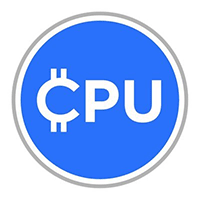 CPUcoin(CPU幣)是什麽CPUcoin是一种基于区块链技术的加密货币,旨在通过共享计算资源来提高计算机性能和效率。CPUcoin的目标是利用闲置的计算资源,例如个人计算机或数据中心的服务器,来为用户提供更好的计算服务。CPUcoin的核心概念是将计算资源共享化,使得用户可以通过共2025-03-26 21:34:07
CPUcoin(CPU幣)是什麽CPUcoin是一种基于区块链技术的加密货币,旨在通过共享计算资源来提高计算机性能和效率。CPUcoin的目标是利用闲置的计算资源,例如个人计算机或数据中心的服务器,来为用户提供更好的计算服务。CPUcoin的核心概念是将计算资源共享化,使得用户可以通过共2025-03-26 21:34:07 -
 XMZ(XMZ幣)APP下載地址XMZ(XMZ幣)是一種加密貨幣,它是基於區塊鏈技術的去中心化數字貨幣。如果您想要使用XMZ幣進行交易或投資,您可以下載XMZ的官方應用程序來管理您的資產。 XMZ應用程序可以讓您輕鬆地查看您的賬戶餘額、進行轉賬和收款。同時,您還可以通過應用程序查看最新的2025-03-26 21:34:02
XMZ(XMZ幣)APP下載地址XMZ(XMZ幣)是一種加密貨幣,它是基於區塊鏈技術的去中心化數字貨幣。如果您想要使用XMZ幣進行交易或投資,您可以下載XMZ的官方應用程序來管理您的資產。 XMZ應用程序可以讓您輕鬆地查看您的賬戶餘額、進行轉賬和收款。同時,您還可以通過應用程序查看最新的2025-03-26 21:34:02 -
 Sergey Save Link(SSL幣)近期會暴跌?近期,有一些市場分析師對SergeySaveLink SSL幣未來的走勢感到悲觀,認為它可能會暴跌。這種預測主要基於幣值波動性高和市場不穩定的情況下,SSL幣可能會受到影響而下跌。 首先,SSL幣是一種虛擬加密貨幣,價值受到市場供需和投資者情緒的影響。在市2025-03-26 21:33:58
Sergey Save Link(SSL幣)近期會暴跌?近期,有一些市場分析師對SergeySaveLink SSL幣未來的走勢感到悲觀,認為它可能會暴跌。這種預測主要基於幣值波動性高和市場不穩定的情況下,SSL幣可能會受到影響而下跌。 首先,SSL幣是一種虛擬加密貨幣,價值受到市場供需和投資者情緒的影響。在市2025-03-26 21:33:58 -
 Authoreon(AUN幣)近期會暴漲?近期,人們對Authoreon(AUN幣)的關注度正在逐漸增加,這可能導致其價格走勢出現一定程度的波動。有一些人認為,Authoreon的價格可能會出現暴漲的情況,這主要是基於以下幾個原因: 首先,Authoreon是一個新興的加密貨幣項目,它擁有一個強大2025-03-26 21:33:53
Authoreon(AUN幣)近期會暴漲?近期,人們對Authoreon(AUN幣)的關注度正在逐漸增加,這可能導致其價格走勢出現一定程度的波動。有一些人認為,Authoreon的價格可能會出現暴漲的情況,這主要是基於以下幾個原因: 首先,Authoreon是一個新興的加密貨幣項目,它擁有一個強大2025-03-26 21:33:53


 Bitcoin
Bitcoin Binance幣安
Binance幣安


